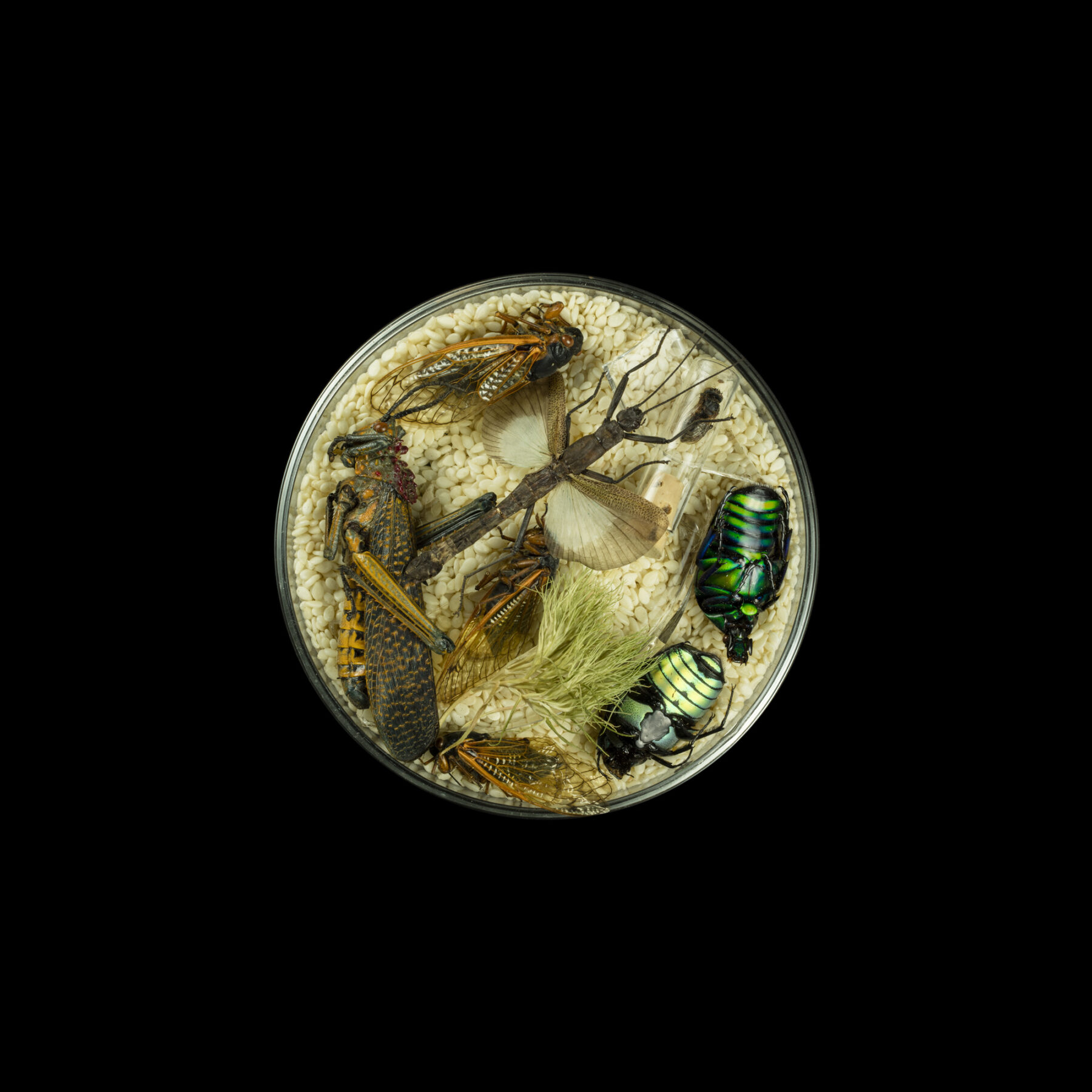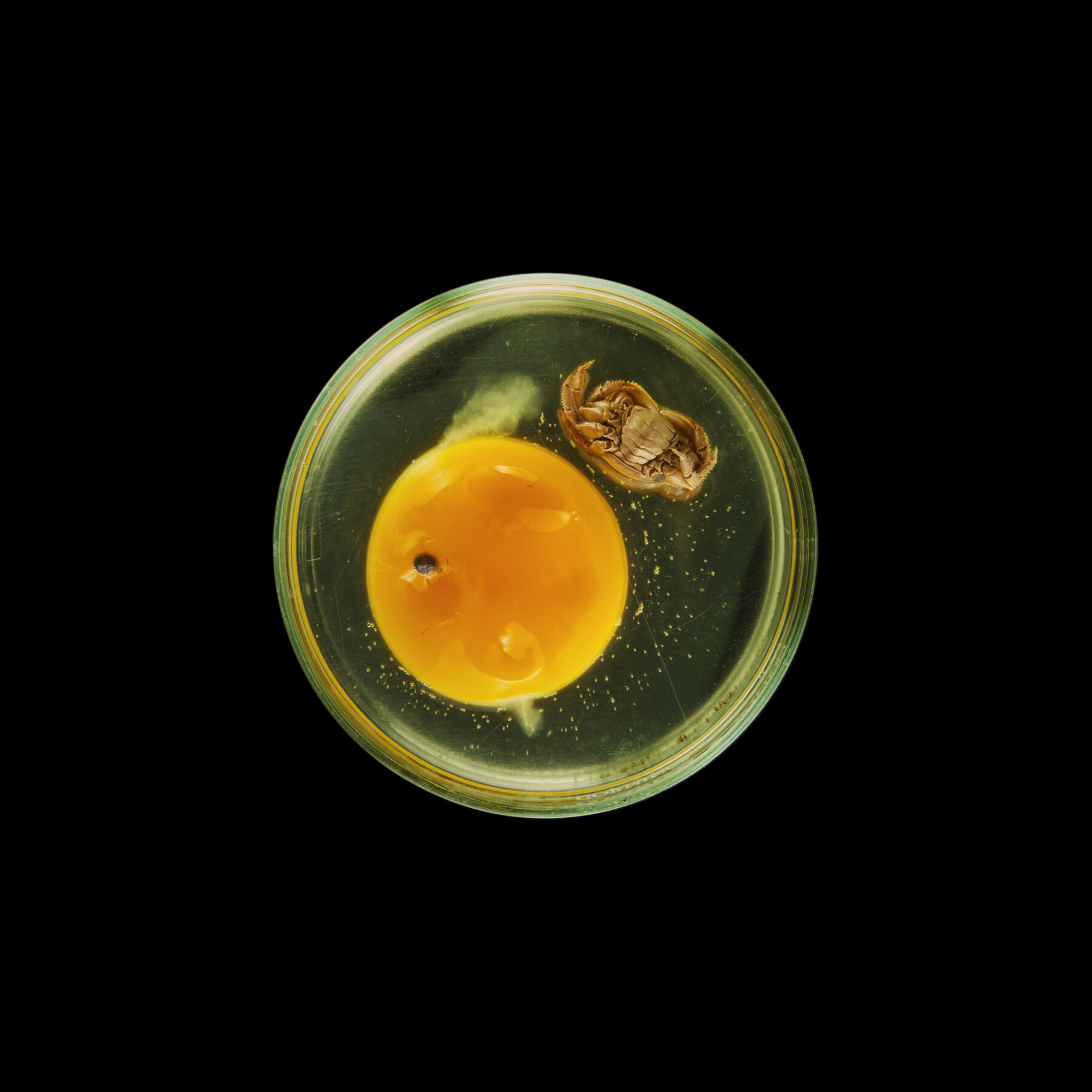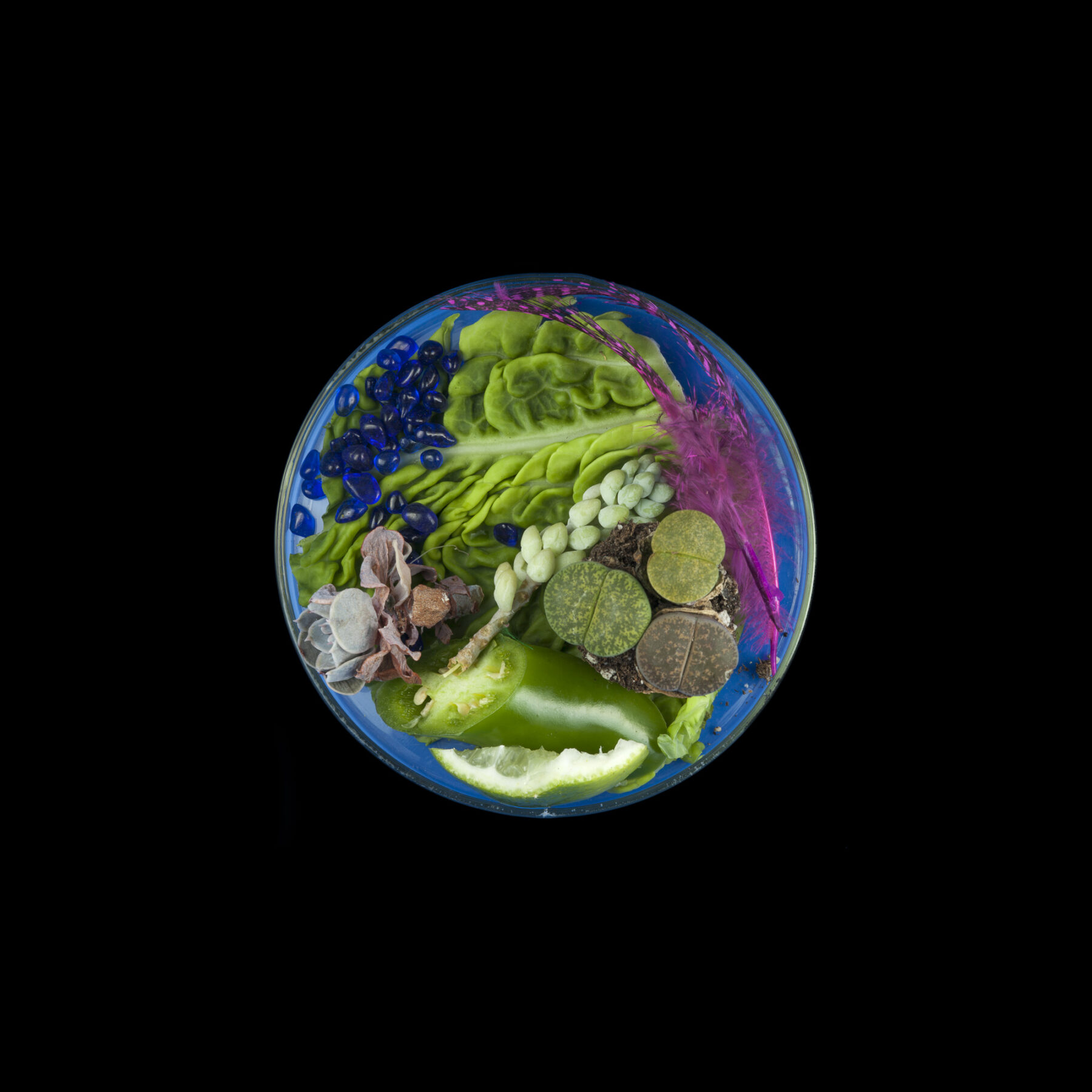


October 31, 2016
Petri dishes, named after the German bacteriologist Julius Richard Petri (1852-1921), are the round, shallow glass vessels used variously in laboratories to grow bacteria, germinate plants, and view liquid samples under low-powered microscopes. For these photographs Suzanne Anker, whose multi-media works bridge the arts and sciences, fitted out Petri dishes with dense and seductive mini-landscapes largely comprised of naturally-occurring, but sometimes including man-made materials. Titled Vanitas, and named after the genre of 17th century Dutch still life paintings that juxtaposed symbols of life and decay, this series exploits the flatness of photography to survey improbably seductive and miniature environments that Anker carefully created. The resulting images suggest natural cycles of life and death, speak to the manipulation of nature and the consequences of that, and remind us, too, that the term ‘petri dish’ is also used to describe hospitable arenas — like the science and the arts-where inquiry and new ideas can develop.


